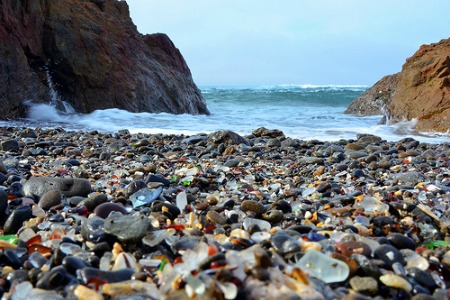
Virginia farmer Buff Showalter relies on federal conservation funding to help him protect nearby Chesapeake Bay waterways.
Standing on the edge of a streamside habitat he helped restore, Virginia farmer Buff Showalter interrupts himself mid-sentence to point out a pair of hummingbirds overhead, barely visible as they sketch busy circles against a blue-sky backdrop. By late August, he says, there will be hundreds of them flitting around their favorite jewelweed wildflowers in this forage-covered patch of wetlands.
The patch used to be a favorite drinking hole for Showalter’s cattle as well, before he realized that having cows near and in the waterways could contribute to pollution in the nearby Chesapeake Bay. A decade later, the stream is fenced off and teaming with wild-looking shrubs and trees that help soak up pollutants before they reach the water.
Growing up fishing and birdwatching on the fourth-generation farm where he now raises cows and chickens, Showalter watched over time as some local species declined with the water quality in streams running through the property. The bay, meanwhile, has become a receptacle for agriculture nutrients such as nitrogen and phosphorous — so much so that in 2010 it contained the nation’s third-largest dead zone (an area where generations of dying algae blooms have left the water oxygen-free and inhospitable to all aquatic life).
Showalter started doing his “small part” to improve the quality of the water running off his farm in the early 2000s. Along with setting aside land for marshes, Showalter began implementing rotational grazing for his cattle, allowing the soil to rest. These days, he is far from alone in his conservation efforts as more livestock farmers in the region work to shrink their piece of the pollution pie.

Photo by Ole Bendik Kvisberg.
The area surrounding the Chesapeake is well-known for its concentrated animal feeding operations, or CAFOs, which are regulated — at least in theory — by the Environmental Protection Agency (EPA). But small- and medium-sized farms and ranches present a different set of challenges. With animals often grazing on the land, these farms are also sources of “nonpoint pollution,” which are, by definition, harder to pinpoint.
Conservation groups in the area have had success in helping these farmers make small changes to farming practices, like fencing off streams and implementing rotational grazing. But — with just under half of Chesapeake Bay’s unhealthy nitrogen load coming from farms — they still have a ways to go.
Farm bill funding?
Libby Norris works as a liaison between farmers and the Chesapeake Bay Foundation, which has taken the lead on helping farms change their practices. She says farmers like Showalter end up taking on these projects for a host of reasons. Some see it as the right thing to do as stewards of the land, and others do it because there is money to help pay for the projects — or at least there has been in the past.
The 2008 farm bill set aside $188 million over four years specifically for conservation projects and technical assistance on farms in the watershed, which were deemed a high priority. But a repeat of that funding level in the current farm bill is highly unlikely. (Congress returns from recess in September, at which point it’s still unclear whether they’ll be able to extend the current bill or negotiate a new five-year bill.)
Doug Siglin, federal affairs director for the Chesapeake Bay Foundation, says the Senate’s version of the bill, passed in June, includes a “comparable level” of hard-fought funding for Chesapeake projects under a regional conservation program. But the House version of the bill doesn’t include that language at this point.
Meanwhile, the Clean Water Act and related directives require that measures be in place by 2017 to move the bay more than halfway toward its cleanup goals, which — along with occasional visits from environmental regulators — has driven a sense of urgency among area farmers. The act requires that measures be fully in place by 2025 to restore the Chesapeake to health in the following years.
“Our farmers are under tremendous pressure that isn’t [the same] in Illinois or Iowa or Washington state or anywhere else,” says Siglin, who’s worked with legislators for years to help fund conservation projects. “The funding for [conservation projects] and the amount of money that’s available to make the changes is important.”
“Relationships are priceless”
Norris, who grew up on a Nebraska farm and now works with farmers in the watershed to implement better environmental practices, says each farm has its own unique needs. She can think of 15 different ways to install a watering system, for example, depending on the farm’s elevation, water source, and goals.
After more than a decade in the field, Norris has built relationships with farmers who otherwise bristle at visits from the EPA, but appreciate her help. Her position — funded by farm bill dollars — entails visiting farms to give technical advice on projects and letting farmers know about USDA and state programs that split the cost of those projects.
“Most farmers in the valley know Libby [Norris]. They respect her. Those kind of relationships are priceless,” says Showalter, who’s worked with Norris for a dozen years on various projects, only a few of which have received outside funding.
It’s also telling that Showalter — a self-described libertarian who would prefer to pay for all the projects himself — sees funding conservation funding as necessary for now.
“If we want to clean up the bay, some of the money, unfortunately, is going to have to come from the United States government,” he says.



